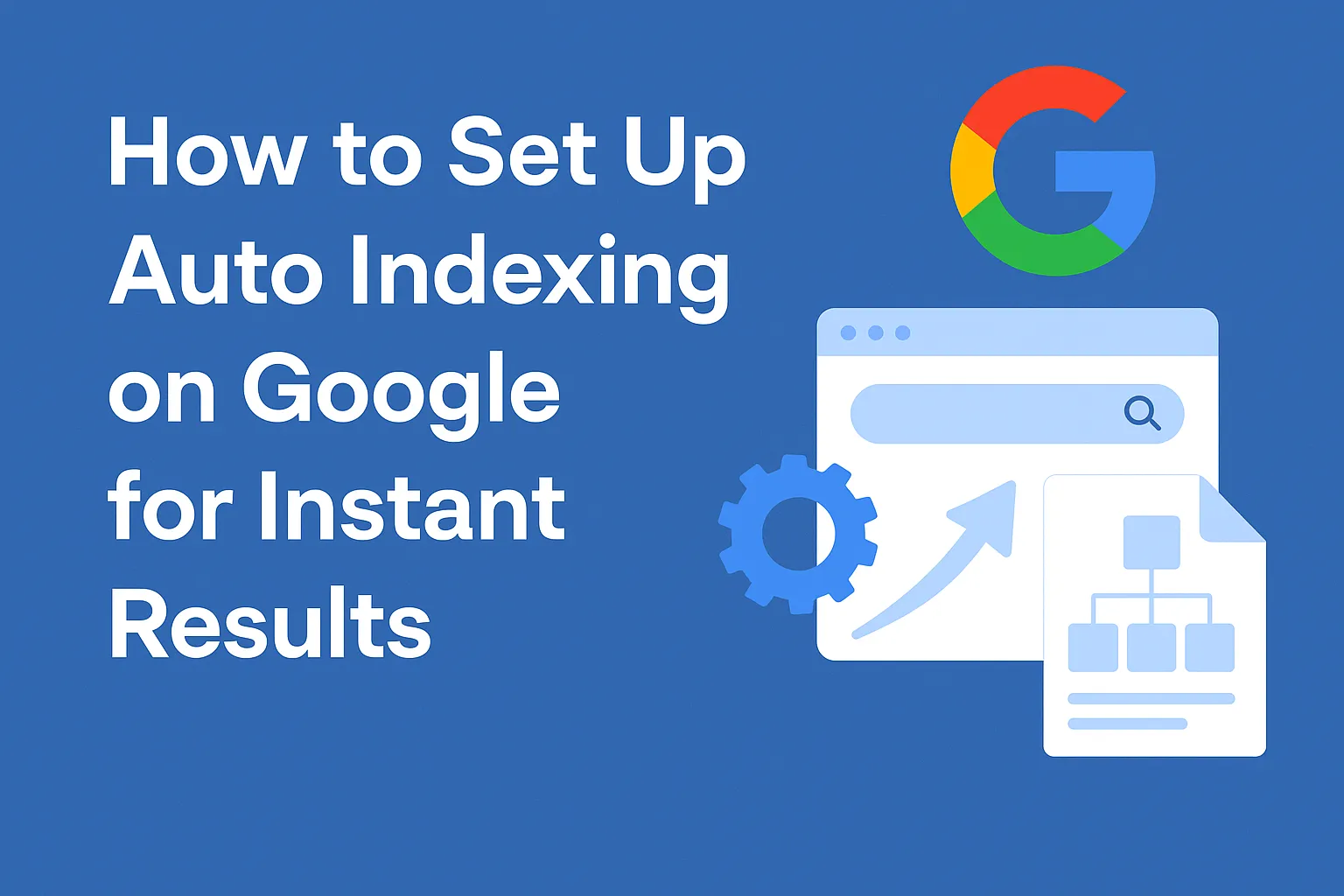Auto indexing is an advanced SEO method that ensures your content appears on Google as quickly as possible. Normally, Google may take days or even weeks to crawl and index new pages, but with auto indexing, you can notify Google instantly when you publish or update content. This approach is extremely beneficial for news websites, e-commerce stores, and blogs where timing is critical. Auto indexing can be set up using Google’s Indexing API, WordPress plugins, or third-party automation tools. When implemented correctly, your content can appear in search results within minutes. Faster indexing improves your chances of ranking ahead of competitors and gaining more organic traffic. In this complete guide, we’ll walk you through every step of the process, from preparing your website for auto indexing to monitoring results and applying best practices for safer, more effective indexing.
1. What Is Auto Indexing and Why Is It Important?
Auto indexing is the process of automatically notifying Google whenever you publish or update a page, eliminating the need for manual submission. In traditional indexing, Googlebot must first crawl your site, which can take weeks. With auto indexing, you send a direct signal via an API or automation tool, prompting Google to crawl and index your page almost instantly. This is particularly useful for time-sensitive content such as news, live events, or product availability updates. Faster indexing gives you a competitive edge by allowing your content to appear in search results before others. Additionally, frequent indexing helps maintain a healthy SEO profile, as Google regularly refreshes your pages. In competitive niches, speed can be the deciding factor in capturing audience attention. Auto indexing not only accelerates visibility but also drives more traffic and engagement in a shorter time frame.
2. Preparing Your Website for Auto Indexing
Before setting up auto indexing, you must ensure your website is technically optimized for crawling and indexing. Your site should be mobile-friendly, secure (HTTPS), and have fast loading speeds. Check your robots.txt file to ensure it’s not blocking important pages from being crawled. Maintain an up-to-date XML sitemap so Google knows which pages to index. Keep your site’s structure clean and logical, with key pages accessible within two to three clicks. Optimize your content with relevant title tags, meta descriptions, and structured data (schema markup) to help Google understand your pages. If your site has broken links, slow performance, or duplicate content, fix these issues before implementing automation. A strong technical SEO foundation ensures that when auto indexing is activated, Google can easily process your requests and quickly add your pages to its search index without delays or errors.
3. Using Google Search Console for Index Requests
Google Search Console (GSC) is the official platform for submitting your site to Google’s search index. Before enabling automation, add and verify your website in GSC. Once verified, you can use the “URL Inspection” tool to manually request indexing for specific pages. While this isn’t automated, it’s a necessary step to establish your site’s presence. You should also submit your XML sitemap in GSC so Google can discover and crawl your pages faster. Many auto indexing tools connect to the Google Indexing API through your GSC account, making proper setup essential. Although manual indexing is slower, it serves as a backup when automation fails. GSC also provides reports on indexing status, performance, and potential issues, allowing you to track how well your pages are being indexed. A well-configured GSC account is the foundation for successful auto indexing.
4. Setting Up Google Indexing API
Google’s Indexing API is the fastest way to inform Google about new or updated content. Start by creating a new project in Google Cloud Console and enabling the “Indexing API” service. Then, create a service account and download your credentials in JSON format. These credentials will be used by your automation tool or script to send index requests directly to Google. While the API is designed mainly for job postings and live events, it can be adapted for certain other content types. Once configured, you can set up a system that automatically sends an API request whenever a page is published or updated. This allows your content to appear in search results within minutes. Compared to manual methods, the Indexing API is significantly faster and more efficient, but it requires proper setup to avoid wasted requests or errors.
5. Using Auto Indexing Tools and Plugins
For WordPress users, auto indexing is made easier through plugins like Rank Math Instant Indexing or Instant Indexing for Google, which connect directly to the Google Indexing API. Once configured, these plugins automatically send indexing requests whenever new content is published or updated. Non-WordPress websites can use custom scripts or third-party services such as IndexNow to notify Google and other search engines. These tools run in the background, ensuring your content is submitted for indexing without manual intervention. When choosing a tool, ensure it’s reliable and compliant with Google’s guidelines. Overusing or spamming the API with unnecessary requests can harm your site’s reputation. By selecting the right automation solution, you can save time, improve efficiency, and keep your content consistently visible in search results.
6. Monitoring Indexing Results
Once auto indexing is set up, you must monitor its performance to ensure it’s working as intended. In Google Search Console, check the “Index Coverage” report to see which pages have been successfully indexed and identify any errors. You can also perform a “site:yourdomain.com” search in Google to verify if your content appears in search results. Track how long it takes from publishing to indexing, and adjust your strategy if certain pages are taking too long. Common issues that delay indexing include low-quality content, technical errors, or violations of Google’s guidelines. Monitoring allows you to identify and resolve these problems quickly. Keep a log of your indexing speed over time to measure the effectiveness of your automation setup and ensure you’re achieving the fastest possible results.
7. Best Practices for Faster and Safer Indexing
While auto indexing can deliver rapid results, it’s essential to follow best practices to avoid potential penalties. Only submit high-quality, original content that provides real value to users. Avoid sending duplicate or low-value pages for indexing. Keep your XML sitemap updated and exclude unnecessary pages with a “noindex” tag. Improve site speed by optimizing images, removing unnecessary scripts, and using caching. Be mindful of your API request limits, and prioritize indexing for important pages only. Always include relevant title tags, meta descriptions, and structured data to help Google understand your content. By integrating auto indexing into a broader SEO strategy, you can achieve both fast indexing and sustainable growth. Striking this balance will ensure your site remains competitive in search rankings while maintaining compliance with Google’s best practices.



